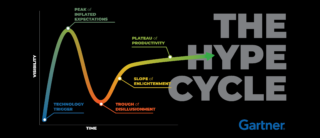Top 3 Challenges Blocking the UX Path to Success
This is the first blog of a multi-part series to guide global enterprises and federal government agencies on best practices that drive successful operational efficiency through better UX using an Agile methodology
By Jon Fukuda
There’s a widening gap between what people expect from their online experiences and what both commercial businesses and federal agencies are able to deliver—and there are good reasons for the gap. Maintaining a focus on both the customer or citizen and internal employees from product inception through deployment and beyond is essential to simplifying complex computer interactions and creating more usable and useful systems to support them.
To further explore the importance of adopting a user-centric approach to designing products—such as mobile, web or computer applications—and information technology (IT) systems, Limina has developed a multi-part blog series to guide global enterprises and federal government agencies on best practices that drive successful operational efficiency through better user experience (UX) using an Agile methodology.
This blog, the first in the series, discusses why there’s a gap between what user expects from their online experiences and what organizations are delivering, and the three core issues that are looming large for many companies and government agencies.
It’s well known that IT projects suffer from alarmingly high failure rates.

To put project failure in context; Gartner, the world’s most listened to analyst firm, estimates that 66% of large scale projects fail to achieve their stated business objectives, are delivered late, or are substantially over budget.
The Standish Group, which exists solely to track IT successes and failures, believes that the most important factors in a project’s success or failure are, in order of importance: the degree of user involvement, executive management support and an experienced project manager.
Furthermore, Forrester Research’s report, “Rich Internet Application Errors to Avoid,” shows that 70% of projects are unsuccessful due to lack of user acceptance.
These research reports tell us that organizations don’t quite grasp what great UX is and how it can benefit them. Additionally, they show that many companies do not prioritize the UX process before initiating new IT and digital projects. If they did, user acceptance would most likely be higher, and the projects would be much less likely to fail.
Gartner’s Hype Cycle (above), is not something you need to leave to chance. With the right strategy, you can mitigate the inherent risks that lay hidden in planning, designing, and deploying new technologies at scale. Let’s examine the top three challenges that are standing in the way of UX success.
Top 3 Challenges Blocking the UX Path to Success
1. Meeting customers’ and employees’ demands for fast and efficient online experiences. As more and more tech savvy customers and citizens now engage with commercial organizations and government agencies online, they demand an experience similar to what they already get from Amazon—free services, convenience, consistency across channels, real-time and intuitive transactions, and technology that works providing fast and efficient online and mobile experiences. Internally, employees are expecting these same online experiences too.
2. Managing large scale projects across decentralized organizations. Many commercial enterprises across a wide range of industries and federal government agencies operate with multiple business units, budgets, operational procedures and technical systems. This decentralized structure is the reason informational silos were formed, giving rise to many issues including: no comprehensive view of the customer or citizen, incompatible systems deployed by groups focused only on their business unit’s requirements, new systems deployed to take advantage of emergent technologies that older systems don’t support, and investment in proprietary technologies that aren’t compatible with evolving standards.
3. Allocating budget. Many global enterprises as well as federal government agencies have fragmentation, overlap or duplication of goals, activities, and provide the same services to the same customers and beneficiaries. To realize the potential of UX, leaders must be thoughtful and intentional about how the budget is sourced for large scale IT projects.
Meeting users’ demands for fast and efficient online experiences, managing large scale projects across decentralized organizations, and allocating budget are the three major roadblocks to UX success. Do you recognize any of these obstacles existing in your organization? If these challenges are standing in your way, send me an email at jfukuda@limina.co and we can talk about how to overcome them.
Watch out for the next few blogs in this series—focusing on defining UX, the reasons why we need it and how organizations benefit from it, and the key steps to driving operational efficiency through better UX.